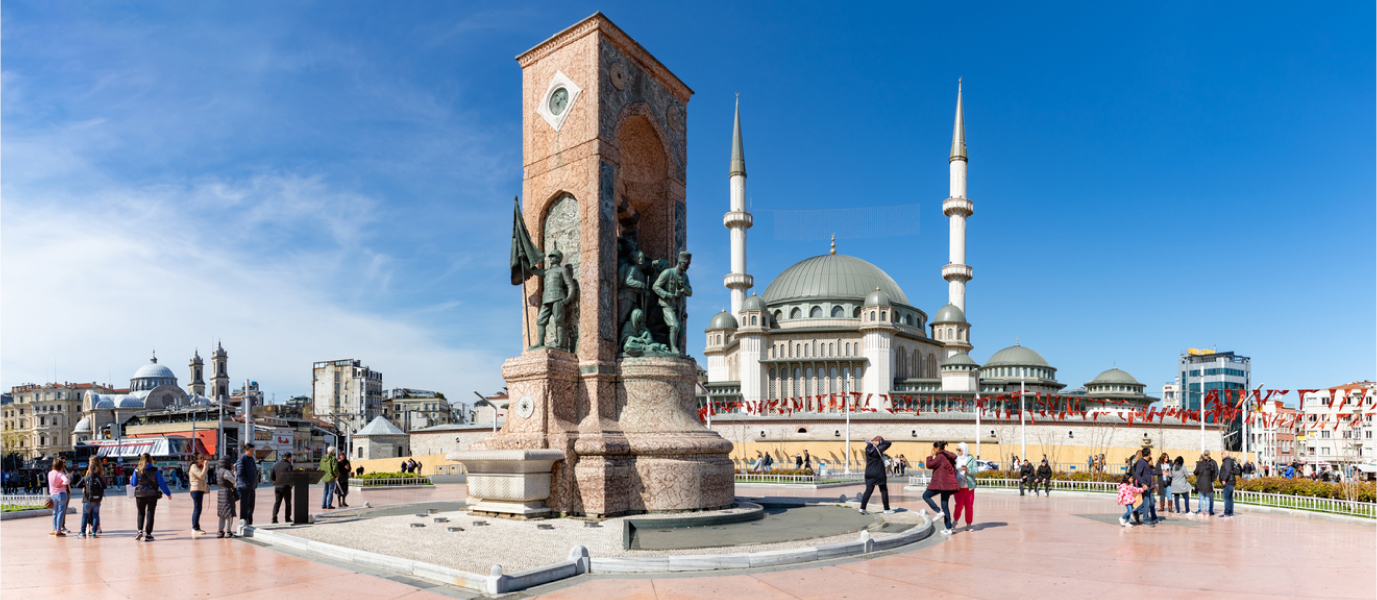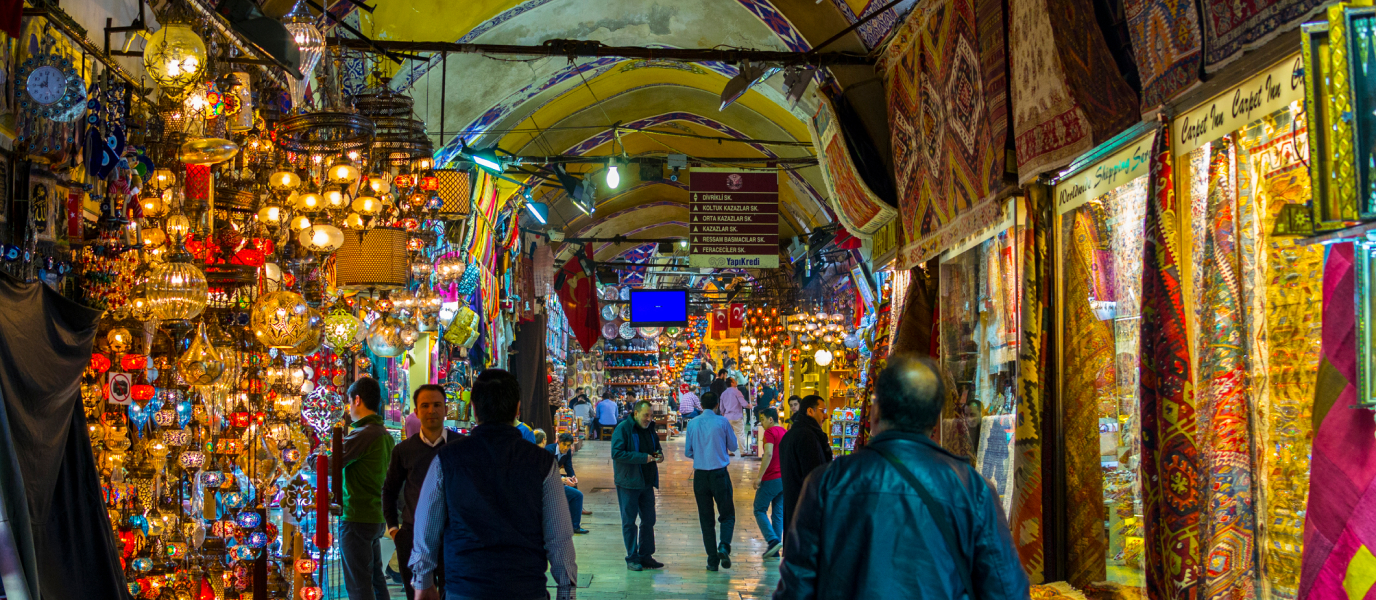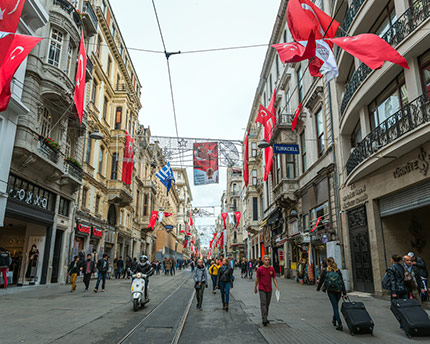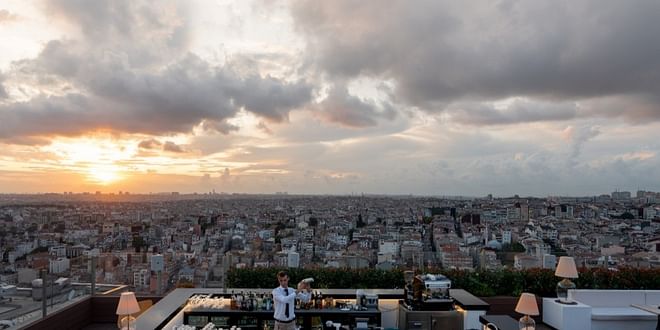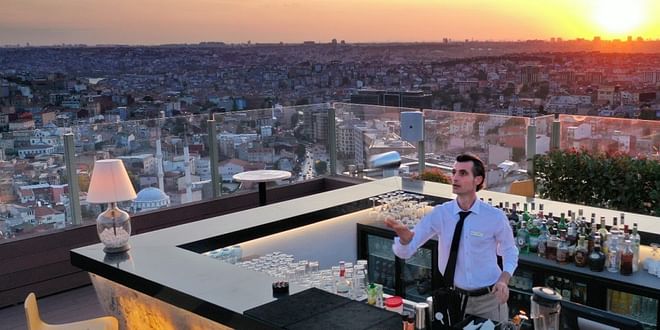Situated in the district of Beyoglu, Taksim square is a corner of Istanbul where visitors will witness two world’s colliding. The diverse mix of languages and cultures is clearly on show in this modern and touristic district, which is one of the most symbolic areas in the metropolis. At the heart of this square, you’ll find the statue that is a monument to the formation of the Turkish republic.
There are a vast range of bars, restaurants, shops, cultural centres and luxury hotels in this part of the city. In addition to being a hub for business, it is also one of the most popular places to celebrate public events or, even, to demonstrate against the government. This was clearest in 2013, when huge concentrations of people congregated on the square to protest against new building developments. The government wanted to change Gezi Park, one of the last green spaces in the centre, into a shopping centre, which led to a great popular uprising.
What to do in Taksim Square, meeting point
It’s definitely worth taking the time to sit at one of the many terraces in Taksim, and watch life go by. The contrasts of colours, cultures and people that walk by are a fascinating thing to see and contemplate. Its cosmopolitan nature and western styles contrast in a delectable manner with the more traditional aspects of the more Islamic and eastern neighbourhoods.
As you walk around the square, your eyes are sure to fall on the monument of the Republic, which shows the republic’s founder, Atatürk, along with other leading figures of Turkish nationalism. You’ll always find people having their photo taken in this spot as it is an important symbol to Turkey. Another frequented place is the Flower Market, which can be found on one side of the square.
Shopping along the bustling Istiklal street
In the areas surrounding Taksim, you’ll find theatres, cultural centres, art galleries and concert halls. Istiklal street leads from Taksim square, and this pedestrian area, complete with an historic and working tram, snakes its way towards the Cable car station; Tünel. The street is home to some embassies and also luxurious hotels, but the main draw of the area is the range of shopping opportunities.
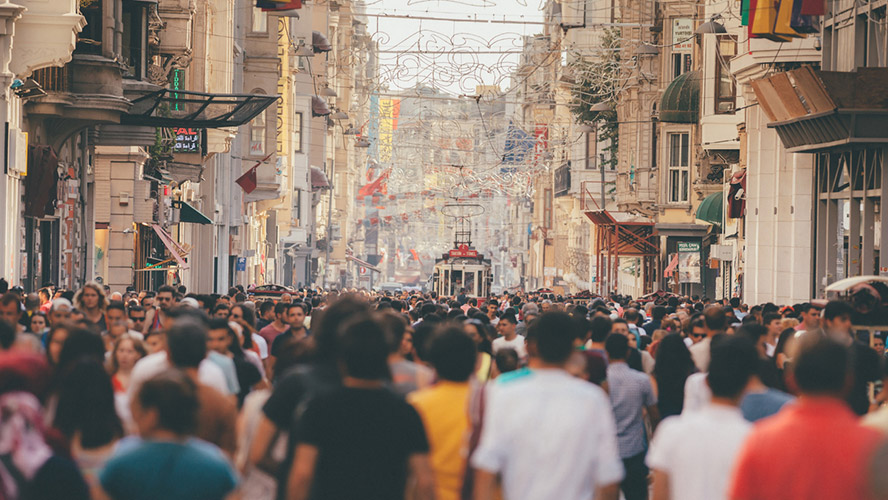
Half-way down the street, you’ll come across the elegant Çicek galleries, which is a beautiful covered alleyway with shops, cafes and bars. The area is alive with a mix of cultures and voices and it’s not uncommon to see street musicians plying their trade. Many street vendors walk the street, selling the extremely popular, and delicious, simit, which is a circular bread covered in sesame seeds. In the winter time, other vendors offer roasted horse chestnuts and the street is filled with the rich aromas from their carts.
Modernity and tradition go hand in hand in this corner of Istanbul. Near the square, you’ll come across captivating, small streets with arcades. Here, you can go to traditional coffee shops and try the delicious baklava, which is a sweet dessert pastry, made of layers of filo and filled with chopped nuts or pistachios. While trying these tasty treats, you can enjoy some of the wonderful views of the cityscape from the many terraces, and see the silhouette of the minarets and skyscrapers against the sky.
Taksim is definitely one of the liveliest areas in Istanbul when it comes to nightlife. There are plenty of restaurants to eat at, great bars, hammams and clubs, many of which are catered towards the gay community.
The History of Taksim Square
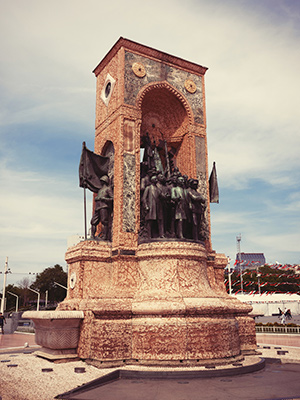
The name Taksim, which comes from the Turkish word for ‘division’ or ‘distribution’, shines a light on the origins of this location. In 1723, during the reign of Sultan Mahmud I, Taksim became the point where water was collected before being distributed throughout the city. The water was brought from the north of the city in main lines that converged in a stone reservoir. From there, pipes branched out to supply the different parts of the city.
Historically the square is a symbolic enclave. It is here that homage is paid to the founding of the Turkish Republic on the 29th of October, 1923. The founder of the republic was Mustafa Kemal Atatürk (1881–1938). A sculpture, representing the founder and other nationalist leaders, is the centrepiece of the square. Atatürk is seen as one of the greatest Turkish heroes and, today, he is still venerated for bringing about important social and cultural changes, which includes the opening of Turkey to the West.
Over time, the square has seen a number of changes take place. On its perimeter, the Taksim Military Quarter was constructed in the 19th century. As time went on, this became the Taksim Stadium, but that didn’t remain for long as it was demolished in 1940 when Taksim Gezi Park was constructed. Another characteristic, though now lost, building was the Atatürk Cultural Centre. The latest construction in the square is a new mosque.
Taksim reflects a contradictory state that exists within a society that moves between modernity and more traditional and religious values. This was clearest when the park was the site for largescale demonstrations and clashes with the police in 2013. The defence of Gezi Park was the beginning of a number of protests which criticised the ever increasing authoritarian nature of president Erdogan.
A Tour through Taksim: the joy of wandering
Taksim is not only a square, but also an entire neighbourhood that includes one of the most frequented tourist areas in the city. As the Nobel Prize winning writer, Orhan Pamuk, said
‘to truly understand Istanbul one must wander a lot, following the path well-trodden and also to not be afraid to take the pass less travelled should the opportunity arise’.
Taksim is the perfect place to find hidden gems. Not far from the square, in a 19th century house in the Çukurcuma neighbourhood, you’ll find the Museum of Innocence, which was named after one of Pamuk’s books. This place is an unusual art gallery that exhibits a collection of more than a thousand pieces which appear and are used by characters in the novel.
But before you go to this special place, it is well worth taking a walk through the symbolic and beloved Gezi Park. Take a break at one of the café bars along the edge of the square and contemplate this public garden; one of the few green spaces to exist in this part of the city. The citizens fiercely defend this green area, as was clearly seen when the plans for a shopping centre were brought to a grinding halt.
Magnificent views from Galata tower and the approach to Cihangir
When visiting Taksim, it is a must to go to the Galata Tower and, if possible, approach it by crossing the bridge which shares the same name. It is a historically significant area and is filled with intrigue and tales, as well as boasting some of the best views of Istanbul and the Bosphorus. Galata tower is one of the oldest towers in the world and it was constructed during the time of the Byzantine emperor, Anastasio, to be used as a lighthouse. Over the years, the tower has gone through numerous restorations, because of damage, and has been used in a variety of ways. It has been a dungeon, a watchtower and, at one time, it even housed an astronomical observatory.
Galata tower and Taksim square form part of the European district; Beyoglu. The neighbourhood of Cihangir is part of this greater area. This corner of Istanbul appears throughout the works of Orhan Pamuk and it is the most bohemian area in the city, with many artists, writers and actors spending their time there. It is well worth the time to lose oneself in this beautiful labyrinth, walking its narrow and colourful alleyways and looking out at the Marmara Sea and the coast of Asia. In 2012, ‘The Guardian’ included the district in its list of ‘top five places to live in the world’.
The district is named after the son of Suleiman the Magnificent, Şehzade Cihangir. The sultan built a wooden mosque that had views of the Bosphorus to honour the death of his son. The original mosque was constructed in 1559 and, following damage, was reconstructed in 1889.





























































